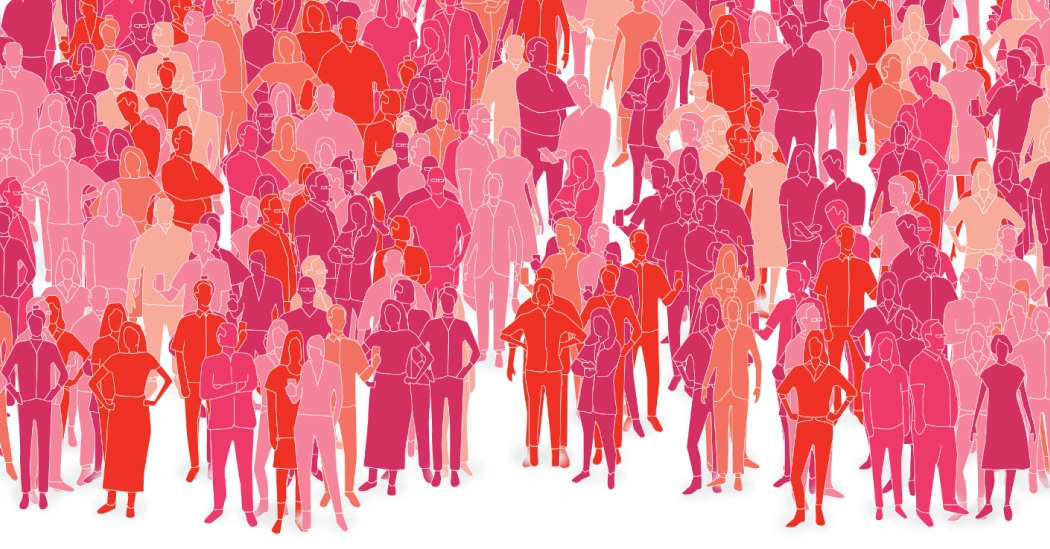AFTER EIGHT YEARS of Republican fealty to Donald J. Trump, few would argue that the party is still defined by Ronald Reagan’s famous three-legged stool of the religious right, fiscal conservatives and neoconservative hawks.
But if the Republican Party is no longer in Reagan’s image, it’s not necessarily a populist-conservative MAGA monolith, either.
The last New York Times/Siena College poll found that only 37 percent of Republicans count as part of Mr. Trump’s loyal base.
And while majorities of Republicans side with Mr. Trump on almost every issue, those majorities are often quite slim: Around 40 percent of Republican-leaning voters support aid to Ukraine, support comprehensive immigration reform or say abortion should be mostly or always legal.
ut if the Republican Party isn’t quite a MAGA monolith, what is it? To better understand the party today, we split Republican and Republican-leaning voters into groups, based on the results of our Times/Siena poll. The groups were defined by how Republican-leaning voters felt on the issues — not how they felt about Mr. Trump.
The results depict a Republican coalition that consists of six groups:
The Moderate Establishment (14%). Highly educated, affluent, socially moderate or even liberal and often outright Never Trump.
The Traditional Conservatives (26%). Old-fashioned economic and social conservatives who oppose abortion and prefer corporate tax cuts to new tariffs. They don’t love Mr. Trump, but they do support him.
The Right Wing (26%). They watch Fox News and Newsmax. They’re “very conservative.” They’re disproportionately evangelical. They believe America is on the brink of catastrophe. And they love Mr. Trump more than any other group.
The Blue Collar Populists (12%). They’re mostly Northern, socially moderate, economic populists who hold deeply conservative views on race and immigration. Not only do they back Mr. Trump, but he himself probably counted as one a decade ago.
The Libertarian Conservatives (14%). These disproportionately Western and Midwestern conservatives value freedom and small government. They’re relatively socially moderate and isolationist. Other than the establishment, it’s Mr. Trump’s worst group.
The Newcomers (8%). They don’t look like Republicans. They’re young, diverse and moderate. But these disaffected voters like Democrats and the “woke” left even less.
Mr. Trump’s dominance of the Republican Party is founded on an alliance between the Right Wing and Blue Collar Populists, two groups that combine to represent nearly 40 percent of Republicans — and about two-thirds of Mr. Trump’s MAGA base of seemingly unshakable support.
The Blue Collar Populists and the Right Wing don’t always agree. In particular, they split on the issues of the religious right, like same-sex marriage and abortion. But these two groups are big Trump supporters. They mostly agree with him on his defining issues and they share his deeply pessimistic, even cataclysmic view of the direction of the country, including fear of the declining white share of the population.
The alliance between Blue Collar Populists and the Right Wing has left Mr. Trump’s potential opposition in disarray. Before Trump, the party’s mainstream prevailed against Right Wing candidates by uniting Traditional Conservatives and the moderate factions — both Establishment and Blue Collar. That blueprint for victory appears to be closed, at least for now.
Without a natural factional base, Ron DeSantis has struggled to maintain a steady foothold in the race. In fact, Mr. Trump leads Mr. DeSantis among every group of Republican voters identified in the analysis. The rest of the party, beyond Mr. Trump’s base, may not always back Trump policies, but it’s not necessarily anti-Trump. And the closest thing to an anti-Trump group in the party — the Moderate Establishment — has become alienated from the rest of the party.



deleted by creator